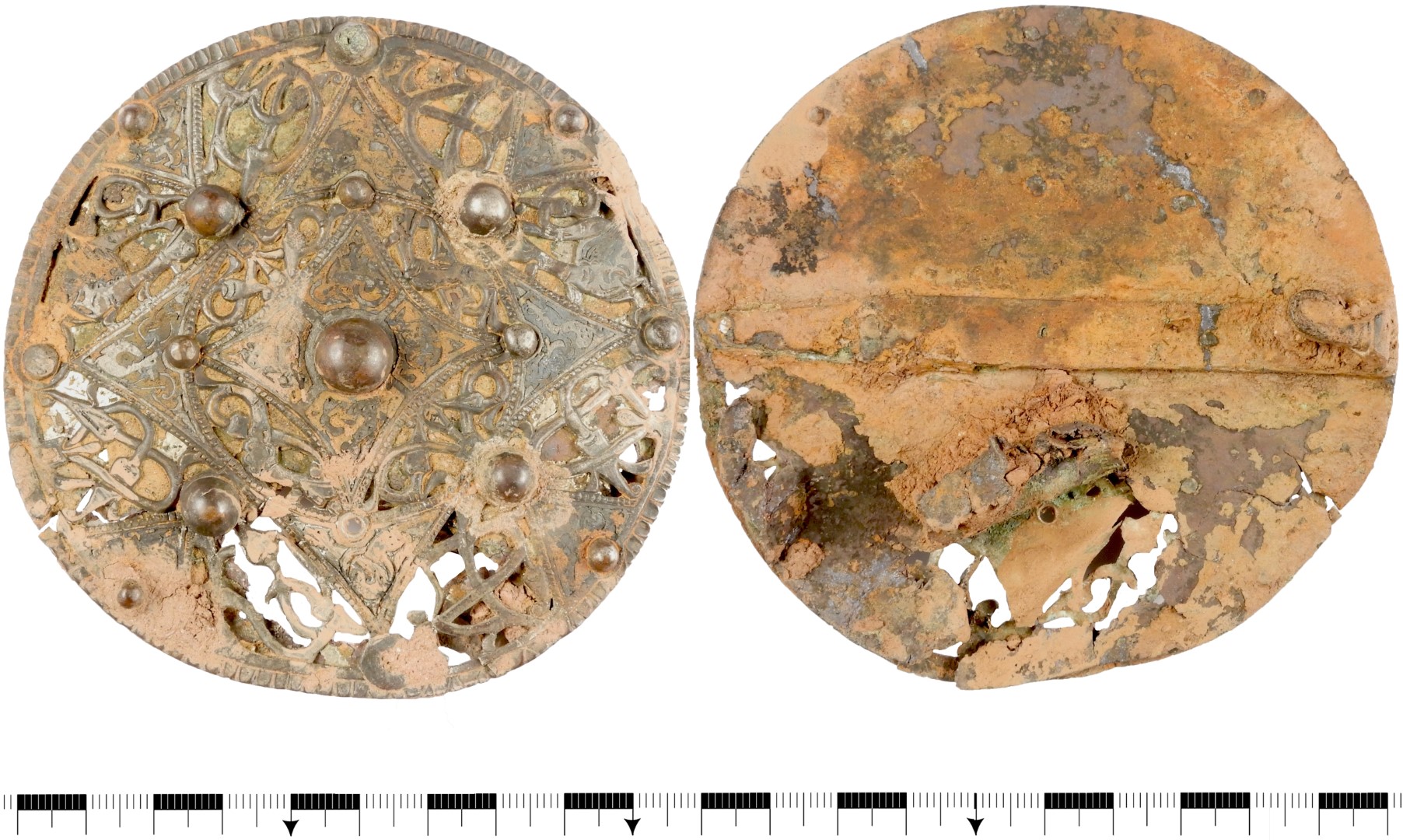

 ta je opravdu famozní
ta je opravdu famozní 
A breathtaking Anglo-Saxon brooch from the early formation of England
Categories: Nálezy nejenom s detektorem ve Velké Británii a Irsku
In October 2020, a unique early medieval brooch from the time of King Alfred the Great was discovered in a field near Cheddar using a metal detector. It is the first brooch of its kind to be discovered in south-west England. It has now been restored and put on free public display near the site of its discovery.
The brooch was found three years ago by Iain Sansome. He immediately reported it to his local PAS representative. This February it was acquired by the Somerset Museum in Taunton under the rules of the Treasure Act 1996. It was still covered in soil and corrosive materials, badly battered by more than a thousand years in farmland.
"When I first saw the brooch I wasn't exactly sure what it was, but I knew it was something special," explained Iain Sansome. "The fact that the last person to own it was probably someone of extreme importance and stature over 1,000 years ago is just incredible," added the lucky finder.
During the successful cleaning, restoration and conservation, the rich and delicate details of the brooch were revealed: Intertwining silver plant and animal images enhanced by black niello enamel and a gilded background on the reverse. Among the animals depicted are the so-called wyverns - mythical dragon-like creatures with two legs, wings and long tails that later became a symbol of Wessex.
"Dragon Heritage has transformed this fascinating brooch and revealed its intricacies. Among the details uncovered are the delicate engravings on the reverse, which may have helped the maker in designing the motif," said
Amal Khreisheh, curator of archaeology at the South West Heritage Trust. "A small contemporary repair on the beaded edge suggests that the brooch was treasured by its owner and worn for a long time before it was lost," the curator added.
The brooch is also unusually large at 91mm, compared to the more common 50-60mm diameter. It is made of an alloy of silver and copper. It is decorated with the openwork style "Trewhiddle", which dates the brooch to between 800 and 900 AD. The decorative motif is composed of zigzag zoomorphic figures interspersed. The surface is studded with rivets, the largest 10 mm in diameter in the centre.
'In 878 Alfred the Great gathered his forces in Somerset and defeated the invading Danish army. Wessex became a safe place and the foundations were laid for the creation of a united English kingdom. The Cheddar brooch dates from a time that was a turning point in English history," said Tom Mayberry, Chief Executive of the South West Heritage Trust.
Experts say it is highly likely that it belonged to a prominent and wealthy person who had contact with a goldsmith of exceptional ability. An archaeological survey has already been carried out at the site but no further significant discoveries have been made. The brooch was thus very likely lost rather than deposited as treasure.
Roman Němec
Sources: thehistoryblog.com, theguardian.com, swheritage.org.uk

original condition

before conservation

after conservation

Iain Sansome
The article is included in categories:







